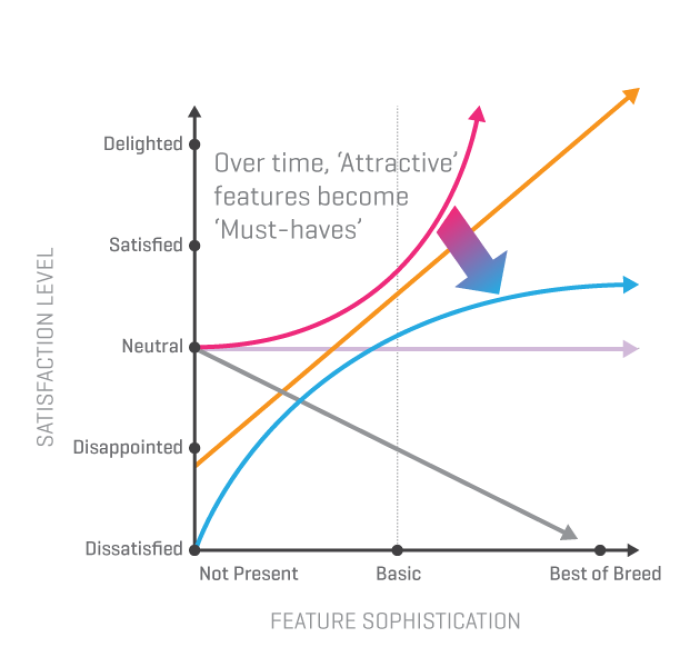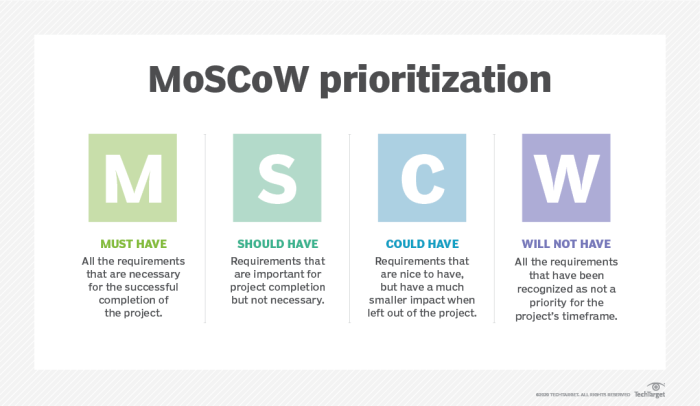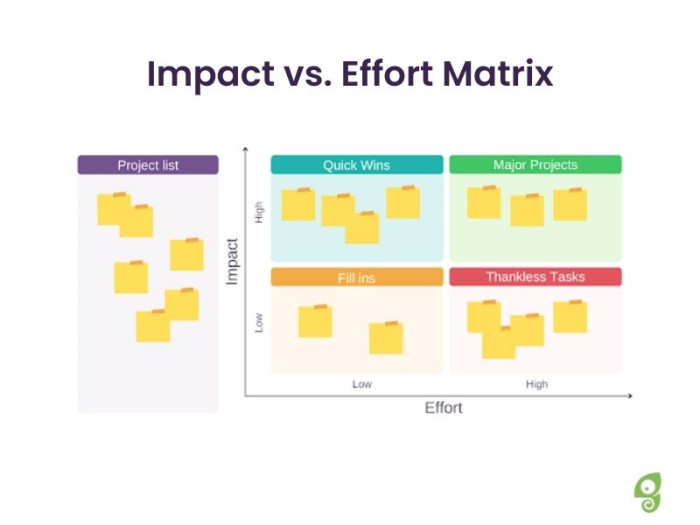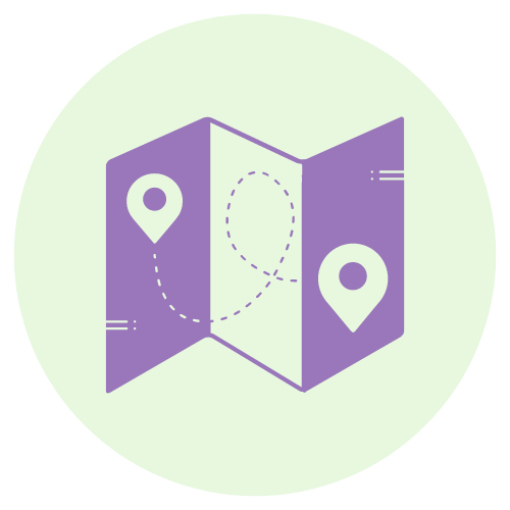Once you’ve completed the product roadmap and/or the product landscape, it’s time to start with idea management and answer the question: What should we do first?
You possibly have dozens of experiment ideas, product launches, and feature updates in a backlog that you would like to work on, so you need to make priorities. There are many strategies and frameworks you can use for feature prioritization. Some of them focus on urgency, while others are more linked to the benefit/effort ratio.
Here are some of the most relevant prioritization frameworks for you to consider.
In this chapter
Kano Model
The Kano Model was created in 1984 by Professor Noriaki Kano to classify customer preferences into specific categories. Thanks to this prioritization framework, product managers and teams can predict customer satisfaction with products and features, using the premise that it will depend on functionality.
Here's an overview of the Kano Model:

(Source)
The Kano Model is divided into five categories:
Threshold Attributes: These are the features that customers expect. Even though they might not be dazzled by them, it would be unsatisfactory not to have them.
Performance Attributes: These are the features that improve the overall customer satisfaction level. It could be a small detail, like a color palette selection, that will encourage users to spend more time in your product.
Excitement Attributes: These are the crucial features that increase the product's edge, distinguishing it from the competition. Examples of these include easier registration, faster service, improved onboarding flows, or effective customer communication channels.
Indifferent Attributes: These are the features that customers cannot decide whether they think of them as good or bad. An example of these would be changing your brand colors. It might generate some opinions but won't have any effect on the functionality.
Reverse Attributes: These features can be related to lower quality or performance and could decrease satisfaction levels. Intrusive advertising is one of the main attributes in this category.
Pro tip: Keeping a focus on customer satisfaction scores is essential if you want to drive your product to success. Run in-product CSAT surveys to capture contextual customer sentiment about specific features. You can build them with Chameleon 😉
MoSCoW Method
This feature prioritization technique takes its name from the acronym M (Must have), S (Should have), C (Could have), W (Won't have). It is one of the most common prioritization frameworks, used by product leaders and stakeholders to understand the significance of initiatives in a specific release.
The MoSCoW framework consists of four different categories:
Must-haves: Non-negotiable features
Should-haves: Important features
Could-haves: Nice-to-have features
Will-not-haves: Lower priority features
The main goal is to assign those labels to each feature in your backlog and convey their objectives properly.
Before using this framework, you need to align the product strategy, goals, and prioritization factors. You can then discuss how your team will settle any potential disagreements, and make product decisions by defining the resources to allocate to each category.

(Source)
RICE Scoring Model
Ever since Intercom developed the RICE roadmap prioritization model to improve its own internal decision-making processes, this framework has been widely used across product teams.
The RICE acronym refers to each of the focuses you can get when making the most of this prioritization framework. When discussing a potential feature update or experiment idea, you should consider:
Reach: The number of people you think your experiment will reach, e.g. the overall number of users who will get the new feature, or the number of users you want to see convert for an upgrade
Impact: The impact score includes five-tiered system: 0.25 (minimal impact), 0.5 (low impact), 1 (medium impact), 2 (high impact) to 3 (massive impact)
Confidence: The percentage of certainty that you have, based on research or statistics
Effort: Effort score is based on a person-month relation. The scoring system includes: 100% (high confidence), 80% (medium confidence), and 50% (low confidence). Anything with a percentage of confidence lower than 50% should be considered as non-important.
Once you have all the numbers, you can work the feature prioritization magic by using the equation to get the final RICE score:

The RICE score allows you to have an overview of predictions. This prioritization framework is a quantitative strategy, and it’s most effective in making more objective, complex decisions.
Impact vs. Effort Matrix
Are you a visual thinker? Then this product prioritization framework is for you.
This technique visually represents all the features based on the product and the technical point of view. In this case, it’s necessary to assign points to each feature both from the product/functional perspective and based on the technical effort.

You’ll come up with your feature positioned in a cartesian matrix, with the impact being the Y-axis and the effort as the X-axis. You can then quickly analyze your product roadmap.
This technique helps prioritize features more clearly, identifying and proposing to others a clear path that allows you to find the right solution.

Want more on validating solutions and ideas?
Grab a coffee and your notepad – this on-demand webinar is full of examples.
Opportunity Scoring
Also known as opportunity analysis or gap analysis, this feature prioritization framework heavily relies on user feedback. It sheds light on features that users consider both important and undeveloped.
If a feature is regarded as of high importance but low satisfaction, you should improve it. On the other hand, if a feature receives a low score in both satisfaction and importance, it can be left out, and you can move your creative efforts elsewhere.
Opportunity scoring is a great way to detect new opportunities while reducing risks. If users consider a feature booth satisfactory and important, you can prioritize new ways of improving the ROI by stepping up the innovation related to this feature.
The bottom line: Not all of these frameworks will suit your team. To identify which is best for you, consider the strategic level of the ideas you’re prioritizing and the lifecycle stage of your product. Essentially, aim for a process that’s scalable and repeatable, and get buy-in from everyone you’re working with to avoid any workflow clashes.




